Abstract
In bovine tracheal smooth muscle the presence of airway epithelium significantly reduced the sensitivity and maximum contractile response to histamine, 5-hydroxytryptamine (5-HT) or acetylcholine. Muscle contraction induced by K+ and electrical field stimulation was of similar magnitude both in the presence or absence of adherent epithelium. The effect of epithelium on smooth muscle contractility was unaffected by pretreatment with indomethacin (10(-6) M) or mepacrine (5 X 10(-5) M). The relaxant response to isoprenaline was enhanced in the presence of epithelium, although this was significant only in the case of precontraction with 5-HT. It is concluded that the bronchial epithelium may produce a relaxant factor which is not a cyclooxygenase or lipoxygenase product. The production of this factor may be reduced or lost following epithelial damage and this may be important in the pathogenesis of bronchial hyperresponsiveness in asthma.
Full text
PDF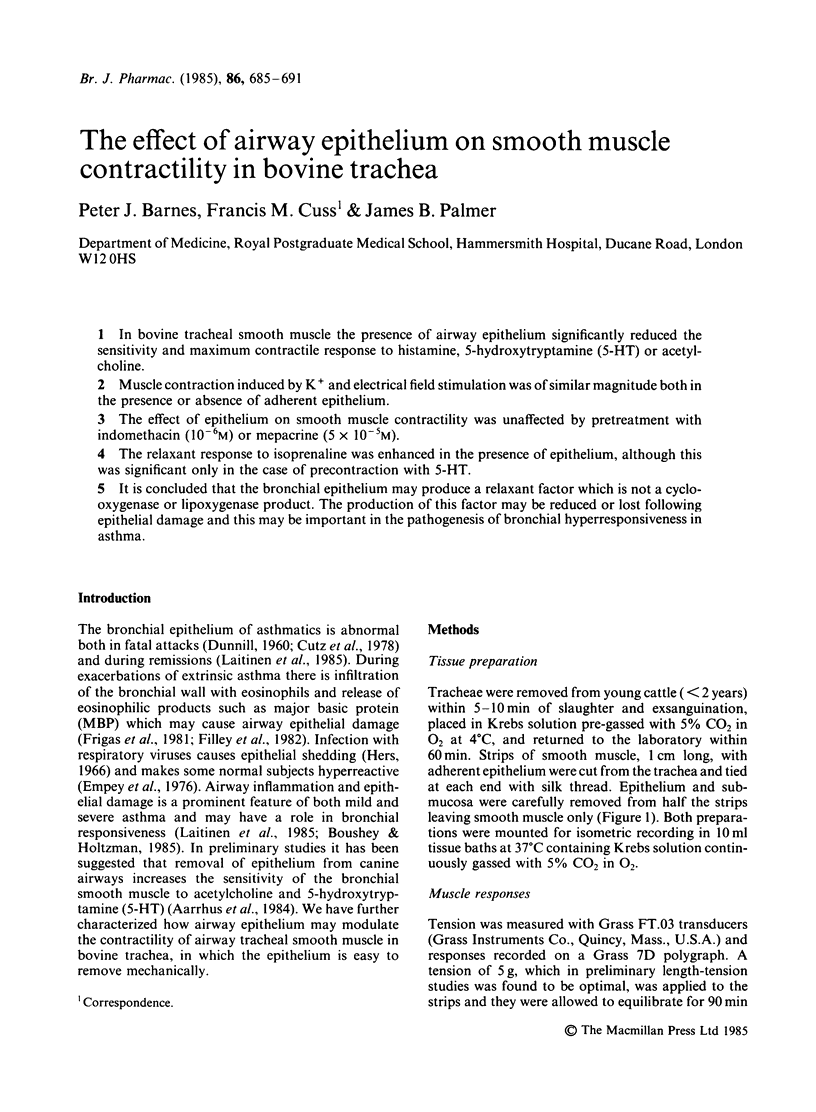
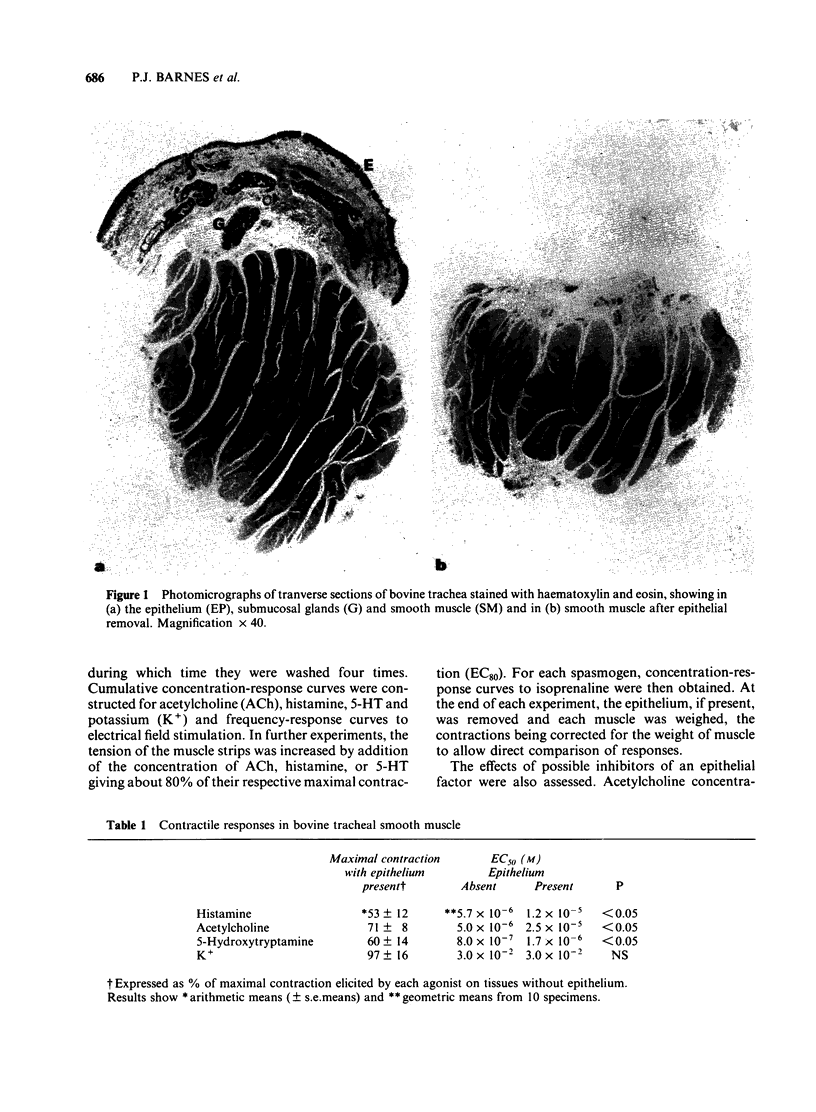
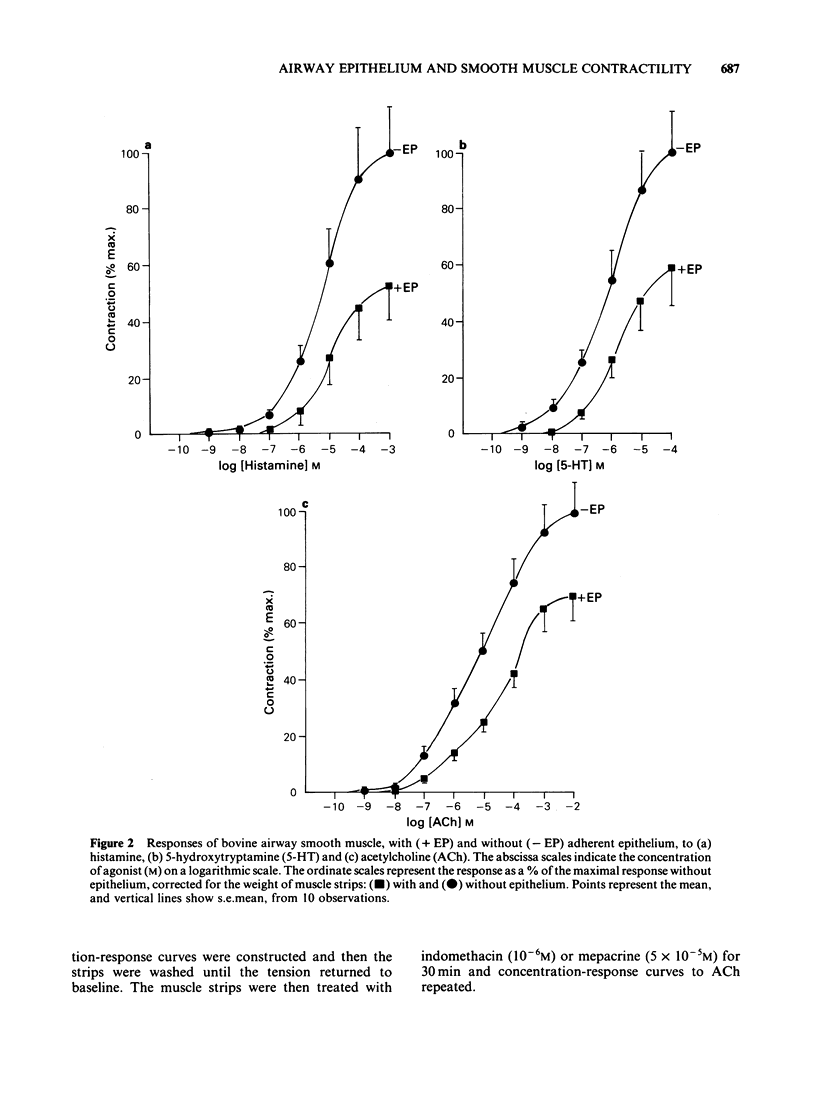
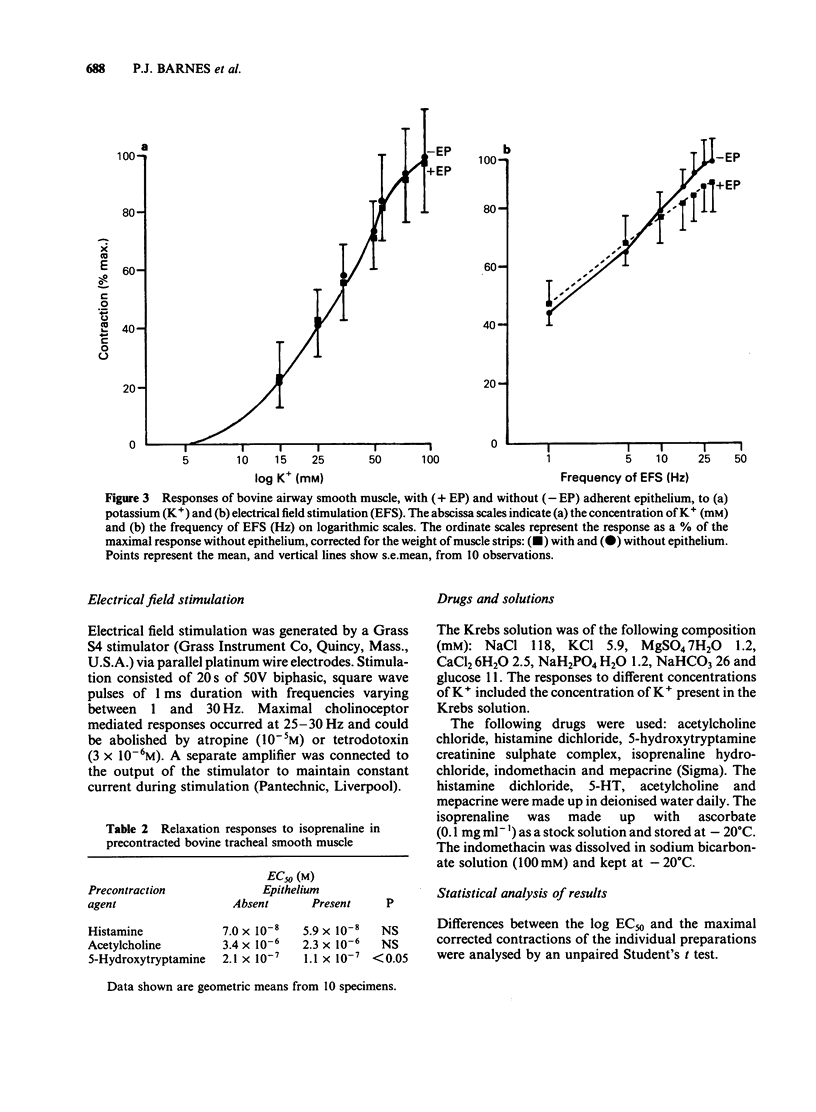
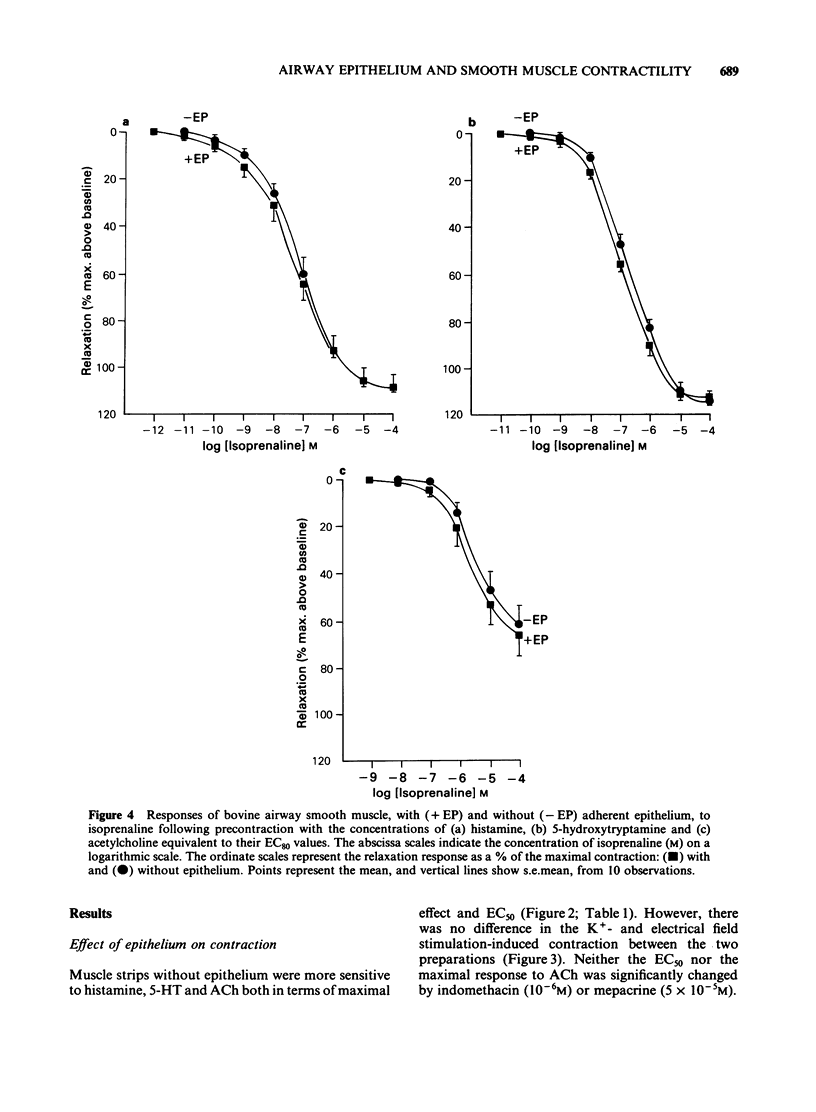
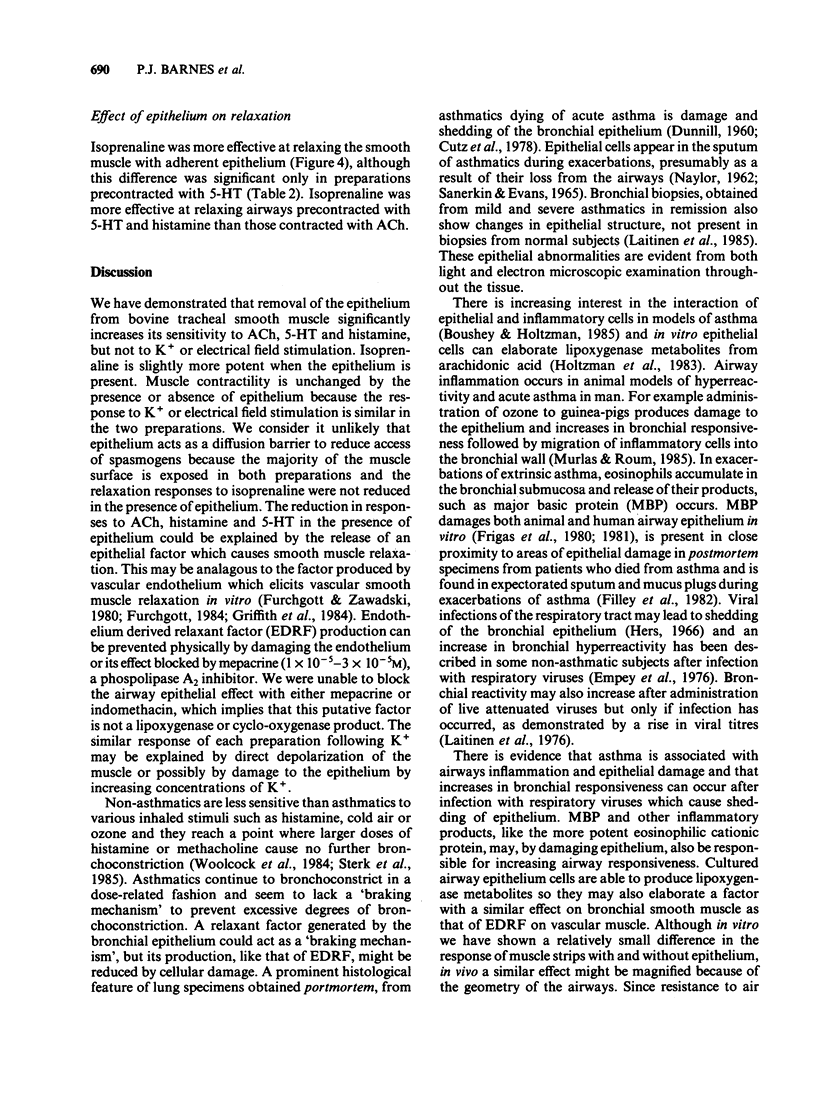
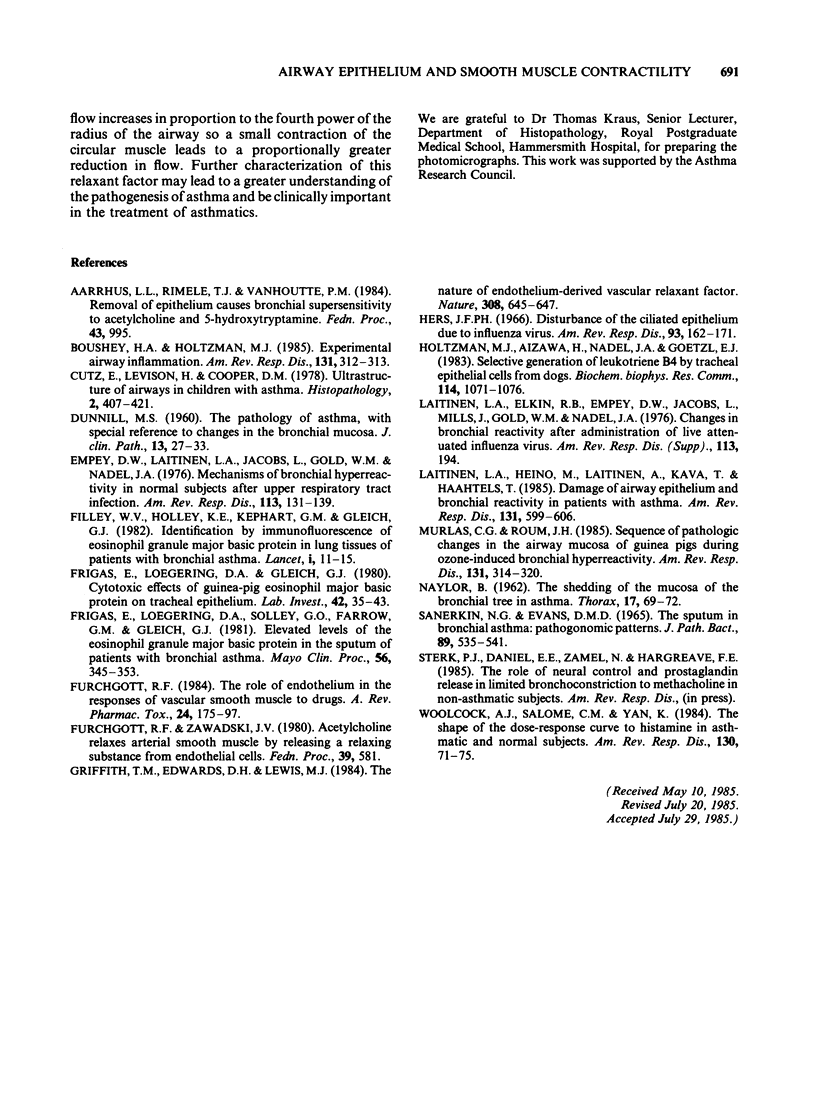
Images in this article
Selected References
These references are in PubMed. This may not be the complete list of references from this article.
- Boushey H. A., Holtzman M. J. Experimental airway inflammation and hyperreactivity. Searching for cells and mediators. Am Rev Respir Dis. 1985 Mar;131(3):312–313. doi: 10.1164/arrd.1985.131.3.312. [DOI] [PubMed] [Google Scholar]
- Cutz E., Levison H., Cooper D. M. Ultrastructure of airways in children with asthma. Histopathology. 1978 Nov;2(6):407–421. doi: 10.1111/j.1365-2559.1978.tb01735.x. [DOI] [PubMed] [Google Scholar]
- DUNNILL M. S. The pathology of asthma, with special reference to changes in the bronchial mucosa. J Clin Pathol. 1960 Jan;13:27–33. doi: 10.1136/jcp.13.1.27. [DOI] [PMC free article] [PubMed] [Google Scholar]
- Empey D. W., Laitinen L. A., Jacobs L., Gold W. M., Nadel J. A. Mechanisms of bronchial hyperreactivity in normal subjects after upper respiratory tract infection. Am Rev Respir Dis. 1976 Feb;113(2):131–139. doi: 10.1164/arrd.1976.113.2.131. [DOI] [PubMed] [Google Scholar]
- Filley W. V., Holley K. E., Kephart G. M., Gleich G. J. Identification by immunofluorescence of eosinophil granule major basic protein in lung tissues of patients with bronchial asthma. Lancet. 1982 Jul 3;2(8288):11–16. doi: 10.1016/s0140-6736(82)91152-7. [DOI] [PubMed] [Google Scholar]
- Frigas E., Loegering D. A., Gleich G. J. Cytotoxic effects of the guinea pig eosinophil major basic protein on tracheal epithelium. Lab Invest. 1980 Jan;42(1):35–43. [PubMed] [Google Scholar]
- Frigas E., Loegering D. A., Solley G. O., Farrow G. M., Gleich G. J. Elevated levels of the eosinophil granule major basic protein in the sputum of patients with bronchial asthma. Mayo Clin Proc. 1981 Jun;56(6):345–353. [PubMed] [Google Scholar]
- Furchgott R. F. The role of endothelium in the responses of vascular smooth muscle to drugs. Annu Rev Pharmacol Toxicol. 1984;24:175–197. doi: 10.1146/annurev.pa.24.040184.001135. [DOI] [PubMed] [Google Scholar]
- Griffith T. M., Edwards D. H., Lewis M. J., Newby A. C., Henderson A. H. The nature of endothelium-derived vascular relaxant factor. Nature. 1984 Apr 12;308(5960):645–647. doi: 10.1038/308645a0. [DOI] [PubMed] [Google Scholar]
- Holtzman M. J., Aizawa H., Nadel J. A., Goetzl E. J. Selective generation of leukotriene B4 by tracheal epithelial cells from dogs. Biochem Biophys Res Commun. 1983 Aug 12;114(3):1071–1076. doi: 10.1016/0006-291x(83)90671-x. [DOI] [PubMed] [Google Scholar]
- Laitinen L. A., Heino M., Laitinen A., Kava T., Haahtela T. Damage of the airway epithelium and bronchial reactivity in patients with asthma. Am Rev Respir Dis. 1985 Apr;131(4):599–606. doi: 10.1164/arrd.1985.131.4.599. [DOI] [PubMed] [Google Scholar]
- Murlas C. G., Roum J. H. Sequence of pathologic changes in the airway mucosa of guinea pigs during ozone-induced bronchial hyperreactivity. Am Rev Respir Dis. 1985 Mar;131(3):314–320. doi: 10.1164/arrd.1985.131.3.314. [DOI] [PubMed] [Google Scholar]
- NAYLOR B. The shedding of the mucosa of the bronchial tree in asthma. Thorax. 1962 Mar;17:69–72. doi: 10.1136/thx.17.1.69. [DOI] [PMC free article] [PubMed] [Google Scholar]
- SANERKIN N. G., EVANS D. M. THE SPUTUM IN BRONCHIAL ASTHMA: PATHOGNOMONIC PATTERNS. J Pathol Bacteriol. 1965 Apr;89:535–541. [PubMed] [Google Scholar]
- Woolcock A. J., Salome C. M., Yan K. The shape of the dose-response curve to histamine in asthmatic and normal subjects. Am Rev Respir Dis. 1984 Jul;130(1):71–75. doi: 10.1164/arrd.1984.130.1.71. [DOI] [PubMed] [Google Scholar]



